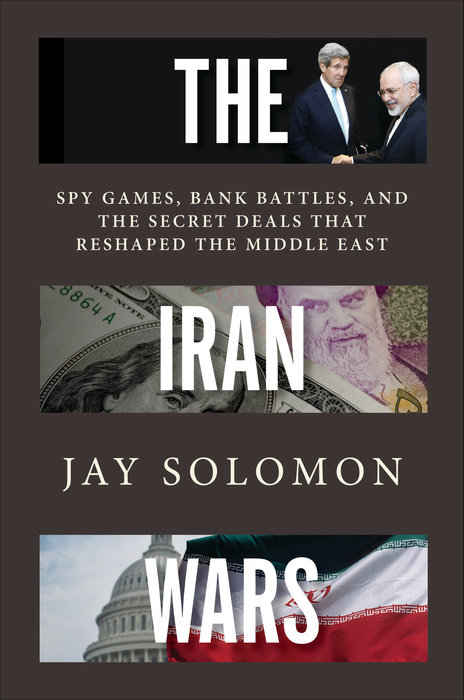The American global nuclear non-proliferation debate and its varying direction to address the nuclear ambitions of the states located at diverse regions has remained an important topic of contemporary world politics. In order to achieve the core objectives of its global non-proliferation campaign, Washington-based advocators of arms control and disarmament mainly focus on the Middle Eastern region where the undeclared nuclear capability of Israel is a matter of less significant concern according to them. The main course of international non-proliferation regime generally emphasizes on the nuclear program of Iran. The Islamic Republic of Iran is continuously busy in fertilizing legitimate grounds to its nuclear program while countering critical elements of international community. In this way, the Iranian nuclear program and its contentious status in the international community has become an attractive point for the international strategic community. The book under review presents an unexceptional discussion on US-Iran nuclear tussle. An American journalist, Jay Solomon, tries to present a different opinion over Tehran’s nuclear program and its relevance to the contemporary American global non-proliferation policy.
Jay Solomon, a well-known journalist is the chief foreign affairs correspondent of The Wall Street Journal. He has expressed his thoughts on numerous political developments of different states and on the basis of his vast experience on world politics, The Wall Street Journal has nominated him for three Pulitzer Prizes. He is one of the prominent American journalists working on Middle Eastern politics. He talks in his book about Washington-Tehran nuclear confrontation by providing details of meetings arranged between Iranian and American officials for completion of the historical nuclear deal. The book starts the debate from the start of bilateral nuclear dialogues which started in 2013. Apart from a brief Prologue and a comprehensive conclusion, the book divides the whole examination of United States-Iran meetings concerning the Tehran’s nuclear program into eleven chapters. Every chapter carries a different topic by continuing the main argument of the book. Besides the leading divisions of the chapters of the book, state representatives from Washington and Tehran are also divided in five categories. The leading state officials who played a role in finalizing the nuclear deal between United States of American and Islamic Republic of Iran are divided into The Diplomats, The Financial Warriors, The Nuclear Players, The Axis of Resistance, and Spy Masters.
Jay Solomon begins the conversation from the September 26, 2013 international meeting on the issue of nuclear Iran. The meeting in the United Nations headquarters in New York brought together diplomats from the United Kingdom, Russian Federation, People’s Republic of China, United States of America and the French Republic. Additionally, the representatives of European Union and the Federal Republic of Germany were also invited to move towards a nuclear deal with Islamic Republic of Iran. In this way, the author speaks exclusively about the struggles of the international community in convincing the government of Iran on a nuclear deal during the first presidential term of Obama. The shift in Washington’s foreign policy towards Iran no doubt reflects a landmark achievement of the Obama administration, but it has unexpectedly altered the traditional strategic landscape of the Middle East, according to the writer.
Solomon’s book contains an interesting detail of different meetings between Washington and Tehran which he covered from 2012 to 2015. The initial efforts for the deal during the Obama administration were started by John Kerry, the Secretary of State of United States, and Javad Zarif, the Foreign Minister of Iran. The fundamental objective for breaking US-Iran nuclear stalemate was inherited in the Obama’s vision for creating the world free of nuclear weapons. Finally, the decade of failed talks and an inflexible era of economic sanctions on Iran ended in July 2015. A Joint Comprehensive Plan of Action (JCPOA) was concluded in Vienna as the result of intense engagement of P5+1 and the European Union with Iran. The nuclear deal not only lifted sanctions on Iran and inaugurated an era of economic prosperity but it also let western nations establish diplomatically cooperative relations with Tehran. The end of diplomatic isolation of Iran along with the termination of an extreme period of crippled economy is mainly analysed by Solomon. The writer attempts to evaluate the process of negotiations which eventually compelled state officials from both sides to begin bilateral interaction. Solomon remains reluctant in providing the actual reasons of US-Iran hostility under the broader perspective of Middle Eastern politics and he invests much of his professional insight in presenting the main particulars of Iran nuclear deal in his study.

The Wall Street journalist fundamentally attempts to outline a summary of recent history of US-Iran relations. Furthermore, the book holds a comprehensive record of foreign relations of the two states which started an era of altered diplomacy between Iranian and American governments. In short, the book offers an appreciable understating of the events which led Washington and Tehran towards a JCPOA. Solomon’s The Iran Wars focuses less on the historical narrations of US-Iran relations, this is the deficient feature in his study. Jay Solomon‘s journalistic examination remains confined to the telling of bilateral nuclear negotiations instead of mentioning the ongoing decades-long Washington-Tehran antagonism.
Solomon‘s book contains an extensive account of information about the nuclear deal and the officials involved in the deal coupled with his own way of looking at US-Iran relations. In this way, his book gives an American version of outlook of JCPOA. The book is a blend of various revelations of diplomatic meetings and secret communications, it also mentions the role of different government departments involved in processing the nuclear deal between two hostile regimes. Readers may find the book adequate reading if only to comprehend the process of Iran’s nuclear deal without expecting a balanced analysis of recent Washington-Tehran diplomatic breakthrough.





